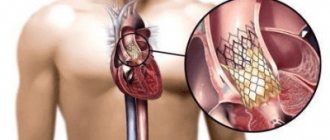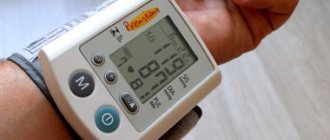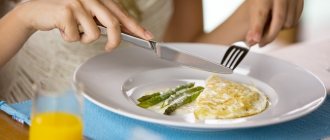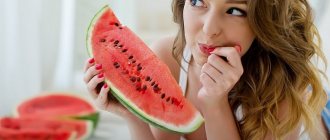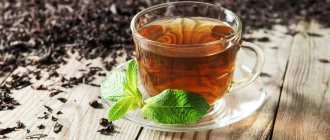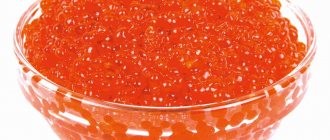The text is for informational purposes only. We strongly urge you not to use diets, resort to any therapeutic menus or fasting without medical supervision. We recommend reading: “Why you can’t go on a diet on your own.”
Nutrition for hypertension is the most important component of antihypertensive treatment aimed at lowering blood pressure. If you do not control your diet, the disease will only progress. The most common causes of death among hypertensive patients are: pathologies of the heart and blood vessels (stroke, myocardial infarction), renal failure, complications of the nervous system.
The goals of diet therapy: correction of metabolic disorders (especially cholesterol), improvement of the functional state of the heart muscle, normalization of the parameters of the blood coagulation system, increasing the elasticity of blood vessels, increasing the synthesis of neuroregulatory hormones (serotonin and dopamine, which prevent mood swings).
General nutritional guidelines for people with hypertension
Often, adjusting your diet is enough to bring your blood pressure back to normal.
With proper nutrition, the condition in some patients stabilizes to such an extent that the doctor can reduce the dose of prescribed medications.
In the diet of a patient with this pathology, the consumption of the following products is reduced or eliminated:
- Salt should not be consumed more than 6-8 g per day. With an excess of sodium chloride, the removal of fluid from the body is delayed, which increases the volume of blood in the vessels. Most foods contain salt, so they don't need to be salted. If the taste seems bland, season the dish with lemon juice, herbs, and mild spices.
- Strongly brewed tea (green, black), coffee, cocoa, drinks containing alcohol cause vascular spasm, as a result of which the heart works more intensely. In addition, they stimulate the nervous system. The possibility of consuming these products is determined in each individual case.
- Animal fats cause the body to produce cholesterol, which clogs blood vessels and limits blood flow to the heart and other internal organs.
- Easily digestible, or fast carbohydrates (sugars) cause obesity.
Foods with potassium to strengthen the heart muscle
Increase the content of the following foods in your diet:
- Plant origin (vegetables, fruits, cereals), since they are rich in dietary fiber (fiber), prevent the absorption of harmful cholesterol and reduce its amount in the blood. Fiber also makes you feel full and prevents overeating.
- Products with magnesium and potassium - minerals that strengthen the heart muscle and increase its endurance.
- Products with vitamin C, which strengthens the walls of blood vessels. To preserve ascorbic acid content as much as possible, reduce the heat treatment time of the product or consume it raw.
Magnesium-rich foods to strengthen your heart muscle
First aid - how to quickly lower blood pressure?
There are a number of products that can quickly reduce blood pressure. All hypertensive patients should be able to provide first aid to themselves in case of a sharp rise in pressure. Chili pepper and cayenne pepper, taken with tea or honey, will have an almost immediate effect. As a medicine you will need a teaspoon of ground pepper.
People who constantly use turmeric in their food recipes will never know what high blood pressure is. Turmeric is a natural antioxidant that has antimicrobial properties and is responsible for cholesterol levels.
The rapid action of garlic during a surge in blood pressure is explained by the content of the substance allicin in this healthy vegetable, which participates in the body's metabolic processes and dilates blood vessels.
Please note that if there is a sharp increase in blood pressure, you cannot stop taking medications. Products that quickly reduce blood pressure become only an aid.
The role of diet in the fight against hypertension
When considering the effectiveness of dietary nutrition, it is necessary to take into account the starting data in each individual case. The transition to a healthy diet with an emphasis on lowering blood pressure is an important preventive measure for the risk group, which includes every second inhabitant of the planet.
The likelihood of developing hypertension increases with a sedentary lifestyle, excessive physical activity and stress, alcohol abuse, smoking, hereditary predisposition and age-related changes.
- Diet for knee arthritis. What foods are good and what are bad for arthrosis?
The beneficial effects of the diet must be supported by giving up bad habits, therapeutic exercises, breathing exercises, and walking.
High blood pressure can be of somatic origin and manifest itself as a symptom of diseases of the endocrine, digestive and cardiovascular systems.
When switching to restrictive diets and standard menus for hypertensive patients, it is necessary to take into account the specifics of concomitant diseases.
Dietary nutrition is not a basis for removing the diagnosis.
Reducing dosages, switching to gentle drugs or abandoning them is carried out by the attending physician on the basis of long-term observation.
Sample menu for the day
You can create a menu using the DASH method taking into account your basic taste preferences. From an extensive list of products, you can create different combinations of dishes. In the morning, cook 250 grams of oatmeal in water. Make a salad with fresh apples and carrots. Dessert will be a handful of prunes or a glass of grapefruit juice. For lunch, vegetable soup and baked sea bass fillet are suitable. Use a handful of walnuts as a snack. You can have dinner with low-fat cottage cheese and crackers. Fill your daily diet with vegetarian dishes. If you cannot immediately switch to plant-based products, then choose lean meats. The DASH diet is popular among men and women with hypertension. Sick people should follow simple recommendations to forget about high blood pressure.
What to exclude or limit?
Products that increase blood pressure
Patients with high blood pressure are prohibited or limited:
- eggs - fried or boiled until the yolk is firm;
- partially fish menu - fatty fish varieties (Caspian sprat, herring, mackerel, eel, halibut), caviar, as well as those prepared by smoking and canning;
- first courses - broths cooked from fish and meat, as well as mushrooms;
- vegetable preparations - salted and pickled;
- some vegetables and herbs - onions, spinach, rare, radishes, garlic;
- fatty meat - duck, goose, as well as liver, kidneys, other offal, smoked meats, canned goods;
- grape juice;
- flour - fresh, flaky, rich pastries;
- dairy products - fatty (above 40%) and salty types of cheese;
- animal and cooking fats;
- dishes with legumes and mushrooms.
Dairy products
Kefir and milk. You need to drink at least one glass of drink a day. Natural, with a minimum percentage of fat content (about 1.5-2).
It is not recommended to buy ultra-pasteurized types because they contain a lot of sugar. This is a ploy by manufacturers to get consumers to pay.
The effect of using fermented milk products is delayed. However, everyone can drink it, even patients with hypotension.
Although milk and kefir lower blood pressure, they do so gently and within small limits. Basically, they enrich the body with calcium if it is sufficiently digestible.
General nutrition rules
Diet for hypertension is an important factor in stabilizing high blood pressure and improving the cardiovascular system. The basis of the diet is table No. 10 according to Pevzner and its variations:
- Nutrition for arthritis of the joints - what can you eat and what can you not?
- 10A – hypertension, accompanied by insufficient blood circulation and cardiac diseases. The goal is to relieve the cardiovascular system as much as possible.
- 10C – recommended for patients suffering from high blood pressure, atherosclerosis, ischemic heart disease, atherosclerotic cardiosclerosis. The goal is to slow down the formation of cholesterol plaques and improve metabolism.
- 10G – stage II-III hypertension. The goal is to stabilize blood pressure to the age norm.
In the initial stages of hypertension, if the patient has no other chronic diseases, diet No. 15 may be prescribed. Characterized by only limited salt intake, up to 5 g/day.
Basic principles of basic therapeutic nutrition for hypertension:
- The daily calorie intake is 2300-2500 kcal/day. Protein/fat/carbohydrate content – 70-90g/70-80g/300-400g.
- For hypertensive patients who are obese, caloric intake is reduced to 2100 kcal/day. The energy value of the diet is reduced by reducing fats - up to 60 g, carbohydrates - up to 250 g, eliminating sugar, starch, confectionery, and sweets based on them.
- Limiting table salt to 2-5 g/day is a prerequisite for any diet for heart disease and hypertension. Only ready-made dishes are seasoned. It is important to avoid excess sodium chloride intake from diet. To do this, it is enough to remove canned food, pickles, marinades, smoked meats, cheeses, and sausages from the menu. If it is difficult to give up salt, it can be replaced with potassium-magnesium chlorides, medicinal salt with a reduced sodium content.
- It is necessary to limit foods containing saturated fats and consume more foods rich in polyunsaturated fatty acids. PNSF are needed for the synthesis of prostaglandins. These substances have a hypotensive effect, improve blood vessels and blood.
- An important part of proper nutrition for heart disease and hypertension is the drinking regime. Every day you need to drink 1.2-1.5 liters of water. Lack of fluid constricts blood vessels, which causes pressure to rise. If arterial hypertension is accompanied by chronic heart failure, edema, the daily volume of water is reduced to 0.8-1 l/day, salt is completely excluded. More foods that cause a diuretic effect are introduced into the diet: dried apricots, grapes, apricots, parsley, rose hips.
The diet for cardiovascular diseases and high blood pressure is fractional - 5-6 times a day, in small portions, without overeating. Vegetables, meat, fish are boiled, steamed or baked. Frying and deep-fried dishes are excluded.
Optimal diet
Neutral products that do not lower or increase blood pressure, but have a beneficial effect on the general condition of blood vessels and must be included in the hypertensive menu include:
- vegetables that reduce not only blood pressure, but also weight (red bell peppers, all types of cabbage, celery, radishes, beets, carrots, zucchini, eggplants, etc.), fresh, steamed or stewed without oil;
- berries and fruits (black and red currants, raspberries, strawberries, cherries, apples, pears, apricots, citrus fruits, grapes, rose hips, chokeberries);
- lean meats (veal, beef) and skinless poultry (chicken, turkey);
- white fish;
- vegetable oils (olive, flaxseed, sunflower);
- cereals;
- pasta and whole grain bread;
- mushrooms;
- greenery;
- spices (cinnamon, oregano, cardamom).
These products normalize the condition of the heart and blood vessels, promote weight loss, and have a beneficial effect on a person’s appearance due to the high content of vitamins, minerals, and valuable microelements.
For hypertension, it is better to replace white sugar with honey, which makes food not just sweet, but as healthy as possible
What should weight loss be like?
People suffering from high blood pressure should lose weight gradually - if they are overweight, lose up to 10 kg per month. Thus, methods that lead to sudden weight loss are prohibited, which is due to two factors:
- strict dietary restrictions and sudden weight loss are a great stress for the body, which will cause an exacerbation of hypertension;
- When losing weight, not only fat, but also a large amount of vital substances - proteins, vitamins and minerals - rapidly leaves the body, which causes complications in the course of the disease.
So, you need to lose weight gradually and through techniques that help lower blood pressure and awaken the following processes in the body:
- remove excess fluid and reduce pressure on blood vessels;
- reduce cholesterol levels and improve blood composition;
- strengthen blood vessels and reduce the risk of spasms;
- help thin thick blood;
- minimize the load on the cardiovascular system.
To achieve your goals and get rid of excess weight, you need to choose the right nutrition and training system.
Drinks to lower blood pressure
For hypertension, it is recommended to increase the consumption of drinking water and healthy drinks:
- fermented milk products - kefir, fermented baked milk, yogurt,
- fresh fruit and vegetable juices prepared at home without heat treatment,
- hot cocoa,
- hibiscus tea drink,
- valerian decoction,
- coconut water.
Many people know about the benefits of fermented milk drinks and fresh juices, but cocoa is unfairly considered a harmful product. In fact, cocoa prevents the formation of blood clots and this drink is recommended for people suffering from hypertension.
Coconut water is one of the natural diuretics and perfectly removes sodium salts.
Currant
Blackcurrant contains a huge amount of ascorbic acid (even more than lemon). Fresh berries, pureed with sugar or frozen in the freezer, are a good help for hypotensive disorders. Dried currants will also help with high blood pressure.
Recipe for a healing decoction:
Take 2 tablespoons of dry berries, pour a glass of boiling water over them, cook in a steam bath for several minutes, let cool, drink 100 ml daily before meals 2-3 times a day.
Spices and seasonings
Ginger has blood pressure-normalizing properties. Although formally it cannot be attributed to this group. This is a full-fledged independent product.
- The substances based on it thin the blood, acting as a natural antiplatelet agent.
- In addition, they help relax the vascular muscles, preventing further spasm and an increase in tonometer readings.
Turmeric is called a good help in prevention and even therapy. The substance of the same name in its composition helps to quickly reduce blood pressure, but gently, and therefore does not create health risks.
Hot cayenne pepper. He's chili. The product is used to rapidly reduce blood pressure. This is a reflex response to the use of capsaicin, which the product is so rich in.
But this can be dangerous, since a sharp jump in blood pressure does not affect the condition of the blood vessels (their elasticity). Pepper is allowed for hypertensive patients, but it should be eaten with caution.

